11 Best Home Remedies For Foot Pain And Prevention Tips
The solution to aching feet can sometimes be so simple that it's hard to believe.

Image: i Stock
Your feet put in several hours of work. Walking around, standing for hours on end, or doing physical activity can make your feet painful and sore. That is why it is important to take care of your feet with attention and be aware of the remedies for foot pain. This article discusses some of the top natural ingredients one can use to soothe sore feet. Scroll down to know more!
 Did You Know?
Did You Know?In This Article
Home Remedies To Relieve Foot Pain
1. Essential Oils
a. Eucalyptus Oil

Eucalyptus oil exhibits anti-inflammatory and analgesic properties (2). Hence, they may be used for treating foot pain.
You Will Need
- 10 drops of eucalyptus oil
- A large bowl filled with hot water
What You Have To Do
- Add 10 drops of eucalyptus essential oil to a bowl of hot water.
- Soak your feet in the bowl filled with hot water for 10 to 15 minutes.
How Often You Should Do This
Do this 1-2 times a day.
b. Peppermint Oil
Peppermint oil possesses anti-inflammatory properties (3). Thus, it may relieve tired legs and feet and treat associated symptoms, like redness and swelling.
You Will Need
- 10-12 drops of peppermint oil
- A large bowl of hot water
What You Have To Do
- Add a few drops of peppermint oil to a large bowl of hot water.
- Soak your feet in the hot water bowl for 10 to 15 minutes.
How Often You Should Do This
Do this once a day.
Bridget, a lifestyle blogger, shared her experience of using birch essential oil for her plantar fasciitis in her blog. She massaged her foot for 5 minutes with the oil twice a day and she found it to be the most effective pain reliever for her. She said, “That was the first morning I have woken up with absolutely no foot pain in at least a year (i).”
2. Baking Soda
Baking soda
is also known as sodium bicarbonate. A study found that sodium bicarbonate injections relieved pain due to knee osteoarthritisi The most common type of arthritis caused by the wear and tear of the flexible tissue at the ends of the bones over time. (4). Hence, it may help relieve foot pain and inflammation.
You Will Need
- 1/2 cup of baking soda
- A bowl of hot water
What You Have To Do
- Add half a cup of baking soda to a large bowl of hot water.
- Mix well until the baking soda dissolves completely.
- Soak your feet in this for 15 to 20 minutes.
How Often You Should Do This
Do this once a day.
3. Coconut Oil
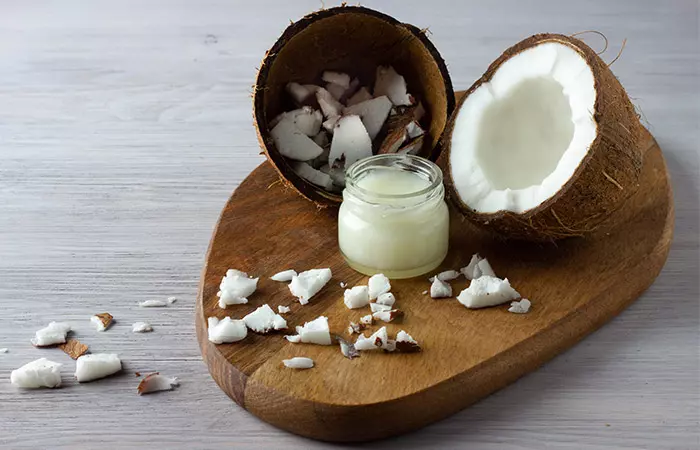
Coconut oil contains medium-chain fatty acids that have anti-inflammatory, antimicrobial, and analgesic properties (5). This may help relieve foot pain. It is also a great home remedy for knee pain.
You Will Need
2-3 teaspoons of coconut oil
What You Have To Do
- Massage coconut oil gently on the affected foot.
- You can also add a few drops of your favorite essential oil.
- Apply the oil and wear socks.
How Often You Should Do This
Do this once a day, preferably before bedtime.
4. Epsom Salt
Epsom salt has anti-inflammatory and soothing properties to it (6). Hence, an Epsom salt foot soak may help treat foot pain.
You Will Need
- 1/2 cup of Epsom salt
- A bowl of hot water
What You Have To Do
- Add half a cup of Epsom salt to a large bowl of hot water.
- Mix well until the salt dissolves.
- Soak your feet in the Epsom salt solution for 10 to 15 minutes.
How Often You Should Do This
Do this once a day.
5. Ginger

Ginger exhibits anti-inflammatory and analgesic properties (7), (8). This may help in combating foot pain and inflammation.
You Will Need
- 1 inch of ginger
- 1 cup of hot water
- Honey
What You Have To Do
- Add an inch of chopped ginger to a cup of steaming hot water.
- Steep for 5 to 10 minutes and strain.
- Add some honey to the ginger tea and consume before it turns cold.
How Often You Should Do This
Do this 3 times a day.
6. Hot Or Cold Compress
Hot and cold compresses may work great in combination for treating foot pain. A hot compress may help in improving the blood circulation to the foot. A cold compress may reduce the pain and inflammation by numbing the affected area (9), (10). Using ice packs is another great home remedy for swollen feet.
You Will Need
- Hot water bottle
- Ice pack
What You Have To Do
- Place a hot water bottle on the affected area.
- Hold it there for 5-10 minutes.
- Replace the hot water bottle with an ice pack.
- Hold it on the affected foot for 10 minutes.
- Repeat this 2-3 times.
How Often You Should Do This
Do this whenever you experience pain.
7. Vitamins

Deficiencies in vitamin D are known to cause chronic pain and weakness (11). Hence, it is important that you follow a diet containing all important vitamins and minerals to stay healthy.
You Will Need
Foods that contain vitamin D (fish, meat, eggs, dairy, cheese, oranges, soy milk, and cereals).
What You Have To Do
Consume vitamin D-rich foods.
How Often You Should Do This
Do this very often.
Note: Consult a doctor before taking additional vitamin supplements.
8. Sesame Oil
Sesame oil
possesses anti-inflammatory and antinociceptivei The response of the sensory nervous system to potentially toxic stimuli, like harmful chemicals, injury, or adverse temperatures. properties (12). These properties may help in reducing inflammation and the intensity of the foot pain.
You Will Need
1-2 tablespoons of sesame oil
What You Have To Do
- Take one to two tablespoons of sesame oil in a small bowl.
- Gently massage this oil on the affected foot.
- You can also add your favorite essential oil to it for additional benefits.
How Often You Should Do This
Do this daily.
9. Mustard Seeds
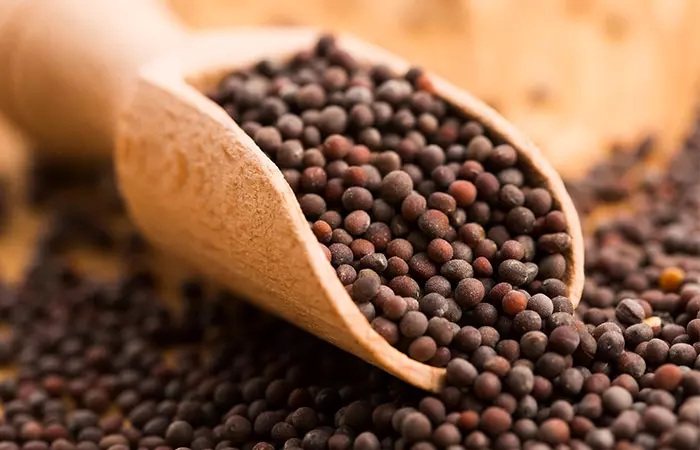
Mustard seeds are rich in nutrients that have anti-inflammatory properties (13). These properties may be beneficial in treating foot pain. They may also help reduce other symptoms, like swelling, inflammation, and tenderness.
You Will Need
- 1/2 cup of mustard seeds
- A large bowl of hot water
What You Have To Do
- Blend half a cup of mustard seeds.
- Add the ground mustard seeds to a bowl of hot water.
- Soak your feet in this mixture for 10 to 15 minutes.
How Often You Should Do This
Do this 1-2 times a day.
10. Cayenne Pepper
Cayenne pepper
is a rich source of a compound called capsaicin. Capsaicin possesses excellent anti-inflammatory and analgesic properties (14). This may help reduce the intensity of foot pain.
You Will Need
- 1/2 teaspoon of powdered cayenne pepper
- A large bowl or bucket of water
What You Have To Do
- Add half a teaspoon of powdered cayenne pepper to a bowl/bucket of slightly hot water.
- Soak your feet in this solution for 10 to 15 minutes.
How Often You Should Do This
Do this once a day.
11. Castor Oil
The ricinoleic acid in castor oil has analgesic and anti-inflammatory properties that may help relieve foot pain (15). However, it is important to note that more human studies are warranted to prove the pain-relieving effects of castor oil.
You Will Need
- 1-2 tablespoons of castor oil
What You Have To Do
- Place the castor oil in a microwave and slightly warm it. Make sure it is not too hot to apply.
- Apply the warm castor oil directly to the affected area.
- Gently massage this oil over your foot.
- Wrap a cotton cloth around your foot and leave it on for 20–30 minutes before removing it.
- How Often You Should Do This
- Do this once a day.
These remedies may be effective for foot pain relief. However, consult a doctor immediately if you notice worsening symptoms, such as persisting pain and increased swelling and redness even after using the remedies. You should do the same if you are unable to put any weight on your foot. This early intervention will ensure timely treatment and decrease the risk of complications.
If you want to prevent foot pain recurrence, here are some tips that may be helpful.
Key Takeaways
- Soak your feet in warm water with Epsom salt to ease discomfort and minimize swelling.
- Sesame oil has anti-inflammatory and antinociceptive effects, so massage it into the affected area daily to relieve pain.
- To increase circulation and alleviate inflammation, use a combination of hot and cold compresses.
- Wear comfortable shoes to avoid foot pain.
Prevention Tips
- Wear comfortable shoes.
- Avoid high heels and narrow-toed shoes.
- Eat healthily and maintain a good weight.
- Stretch before engaging in any vigorous activity.
- Practice foot hygiene.
- Always wear footwear when outside to prevent damage to the feet.
- Massage the feet once in a while to promote blood circulation.
- Try simple stretches and exercises like toe curls and picking up small objects with your toes to strengthen foot muscles.
- If your job requires standing for long hours, take regular breaks to sit down and rest your feet.
 Quick Tip
Quick TipYour foot may be hurting due to an injury or a medical condition. The most common factors that cause foot pain are listed below.
What Causes Foot Pain?
Understanding the common causes of foot pain is key to finding the right treatment. Identifying what is causing your discomfort helps you choose remedies that work best. There are many possible reasons for foot pain. Such as:
- Wearing footwear that doesn’t fit properly
- Wearing high heels, which puts a lot of pressure on the toes
- High impact exercises or sports activities
- Medical conditions, like arthritis, diabetes, and plantar fasciitisi A condition causing inflammation of the thick band of tissues connecting heel bones to the toes and causing heel pain.
- Obesity
- Pregnancy
- Foot injuries
- Corns, calluses, warts, and ingrown toenails
- Medications that cause swelling of the feet
A study was conducted on 593 subjects to assess the prevalence rates of foot pain due to various health disorders. It is worth noting that the majority of the subjects were overweight or obese (57.9%). Patient characteristics such as age, body mass index, socioeconomic status, and other comorbidities were also taken into account. The study revealed that 236 out of 593 respondents (39.8%) experienced moderate to extreme foot pain due to one or more of these reasons.
From a minute injury to an underlying medical condition – any of these factors might be responsible for foot pain. Let us now look at the common symptoms associated with this issue.
Signs And Symptoms Of Foot Pain
- Pain and tenderness in the foot
- Swelling
- Redness
- Bruising
- Numbness or tingling sensation
- Shooting pain in the affected foot
- Pain while moving or while standing for too long
- Skin discoloration and burning or itchy sensation around the foot
The signs and symptoms vary to a great extent, depending on the cause and type of foot pain. Let’s now take a look at the types of foot pain.
Types Of Foot Pain
- Heel Pain: The pain in the heels of your feet could be due to medical conditions like plantar fasciitis or heel spurs.
- Ball Foot Pain: Aches in the ball of your foot are usually caused by wearing ill-fitting shoes or medical conditions like metatarsalsi Five long bones that connect the ankle bones to the five digits of the feet that are numbered from one to five. (bones connecting ankle to toes).” ], Morton’s neuromai A painful condition caused due to inflammation of the tissue around a nerve leading to the toes due to damage or irritation. , or sesamoiditisi An inflammation of the sesamoid bones (small bones in the tendons) of the ball of the foot and the tendons around these bones. .
- Arch Pain: The common culprits behind arch pain are plantar fasciitis and flat feet.
- Toe Pain: Gout, which is also a form of arthritis, is the most common cause of foot pain. Those with a bunioni A bony bump that forms on the joint at the base of the toe when bones in the front part of the foot move out of place. , hammer toe, or claw toe are also susceptible to toe pain.
Other than these, people may sometimes experience pain in the outer edge of the foot. This could possibly be because of a broken metatarsal bone.
Infographic: How To Treat Different Types Of Foot Pain
Foot pain can be of different types, depending on the cause and location of the pain. Therefore, it needs to be cared for and treated accordingly. Check out the infographic below for an overview of the basic techniques and treatments to relieve foot pain caused due to common medical conditions. Illustration: StyleCraze Design Team
Wearing footwear that doesn’t fit properly, high-impact exercises or sports activities, medical conditions like arthritis, diabetes, and plantar fasciitis, obesity can cause foot pain. Extreme pain can even hinder your day-to-day activities. In addition, redness, swelling, bruising, numbness, or tingling sensation are foot pain symptoms. Maintaining appropriate foot hygiene and wearing well-fitting shoes are important to avoid this condition. However, to a large measure, the health of your feet is determined by your lifestyle choices. So, use the home remedies, therapies, and precautions listed above to deal with foot discomfort.
Frequently Asked Questions
Why do I have pain in the middle of my foot?
Any pain in the middle or the arch of the foot could be a result of a common medical condition called plantar fasciitis. Plantar fasciitis is caused due to the inflammation of the fibrous tissue at the bottom of the foot (called plantar fascia). You can follow simple stretches to reduce the pain
What does diabetic foot pain feel like?
Diabetic foot pains are usually the result of peripheral neuropathy, which is one of the most common forms of diabetic neuropathy. Your legs and feet are affected first, and that is why they begin to ache and feel numb.
Can foot pain be related to heart problems?
Yes, foot pain can be linked to heart problems because it indicates a malfunction in your blood circulation. Ankle or foot swelling is another common symptom of an impending cardiac event, though other non-cardiac explanations also exist. Oedema may appear as a symptom of right heart failure (16).
Can blocked arteries cause foot pain?
Yes, narrowing or blocked arteries cause a decrease in blood flow, which may induce foot pain. Blocked arteries could be a symptom of peripheral artery disease (PAD).
What cancers cause foot pain?
Cancers of the kidney, breast, prostate, colon, and lung frequently spread to the foot. Symptoms of metastatic cancer to the foot bones can include pain and swelling, stiffness, and a limp (17).
Are you experiencing foot pain? Watch this video to learn to relieve it in 30 seconds! Follow the simple steps to get quick relief.
Personal Experience: Source
StyleCraze's articles are interwoven with authentic personal narratives that provide depth and resonance to our content. Below are the sources of the personal accounts referenced in this article.
i. Treat Heel Spurs and Plantar Fasciitis with Essential Oilhttps://curlylovesessentialoils.blogspot.com/2014/07/treat-heel-spurs-and-plantar-fasciitis.html
References
Articles on StyleCraze are backed by verified information from peer-reviewed and academic research papers, reputed organizations, research institutions, and medical associations to ensure accuracy and relevance. Read our editorial policy to learn more.
- Buchanan and Kushner. “Plantar Fasciitis.”National Library of Medicine (2022)
https://www.ncbi.nlm.nih.gov/books/NBK431073/ - Silva Jeane et al. “Analgesic and anti-inflammatory effects of essential oils of Eucalyptus.”Journal of ethnopharmacology 89.2-3 (2003): 277-283.
https://pubmed.ncbi.nlm.nih.gov/14611892/ - Sun Zhenliang et al. “Chemical composition and anti-inflammatory cytotoxic and antioxidant activities of essential oil from leaves of Mentha piperita grown in China.”PloS one 9.12 (2014).
https://www.ncbi.nlm.nih.gov/pmc/articles/PMC4262447/ - Caamaño María Del Carmen et al. “A Double-Blind Active-Controlled Clinical Trial of Sodium Bicarbonate and Calcium Gluconate in the Treatment of Bilateral Osteoarthritis of the Knee.” Clinical medicine insights. Arthritis and musculoskeletal disorders vol. 101179544116688899.
https://www.ncbi.nlm.nih.gov/pmc/articles/PMC5385469/ - Intahphuak S. P. Khonsung and A. Panthong. “Anti-inflammatory analgesic and antipyretic activities of virgin coconut oil.”Pharmaceutical biology 48.2 (2010): 151-157.
https://pubmed.ncbi.nlm.nih.gov/20645831/ - Rudolf R D. “The use of Epsom salts historically considered.” Canadian Medical Association journal vol. 712 (1917): 1069-71.
https://www.ncbi.nlm.nih.gov/pmc/articles/PMC1584988/ - Wilson Patrick B. “Ginger (Zingiber officinale) as an analgesic and ergogenic aid in sport: a systemic review.”The Journal of Strength & Conditioning Research 29.10 (2015): 2980-2995.
https://pubmed.ncbi.nlm.nih.gov/26200194/ - Grzanna Reinhard Lars Lindmark and Carmelita G. Frondoza. “Ginger—an herbal medicinal product with broad anti-inflammatory actions.”Journal of medicinal food 8.2 (2005): 125-132.
https://pubmed.ncbi.nlm.nih.gov/16117603/ - Lane Elaine and Tracy Latham. “Managing pain using heat and cold therapy.”Nursing Children and Young People 21.6 (2009).
https://pubmed.ncbi.nlm.nih.gov/19623797/ - Arankalle Dhananjay Jon Wardle and Pradeep MK Nair. “Alternate hot and cold application in the management of heel pain: a pilot study.”The Foot 29 (2016): 25-28.
https://pubmed.ncbi.nlm.nih.gov/27888788/ - Kragstrup Tue Wenzel. “Vitamin D supplementation for patients with chronic pain.” (2011): 4-5.
https://www.ncbi.nlm.nih.gov/pmc/articles/PMC3347929/ - Monteiro Érika Maria Henriques et al. “Antinociceptive and anti-inflammatory activities of the sesame oil and sesamin.”Nutrients 6.5 (2014): 1931-1944.
https://www.ncbi.nlm.nih.gov/pmc/articles/PMC4042560/ - Yang Runping et al. “Mustard seed (S inapis A lba L inn) attenuates imiquimod‐induced psoriasiform inflammation of BALB/c mice.”The Journal of dermatology 40.7 (2013): 543-552.
https://pubmed.ncbi.nlm.nih.gov/23682616/ - Srinivasan Krishnapura. “Biological activities of red pepper (Capsicum annuum) and its pungent principle capsaicin: a review.”Critical reviews in food science and nutrition 56.9 (2016): 1488-1500.
https://pubmed.ncbi.nlm.nih.gov/25675368/ - Vieria Celme et al. “Effect of ricinoleic acid in acute and subchronic experimental models of inflammation” US National Library of Medicine 223–228 (2000).
https://www.ncbi.nlm.nih.gov/pmc/articles/PMC1781768/pdf/11200362.pdf - Clinical features and complications
https://www.ncbi.nlm.nih.gov/pmc/articles/PMC1117436/ - Primary lung cancer presenting as foot pain
https://www.ncbi.nlm.nih.gov/pmc/articles/PMC5471084/#:~:text=The%20primary%20cancers%20that%20most,%2C%20colon%2C%20and%20lung%20cancers.&text=The%20most%20likely%20place%20to,by%20the%20metatarsals%20(23%25).&text=Metastasis%20to%20the%20foot%20bones,%2C%20pain%2C%20and%20a%20limp.
Read full bio of Dr. Jen Esquer
Read full bio of Sucharita Mishra
Read full bio of Arshiya Syeda
Read full bio of Dipti Sharma







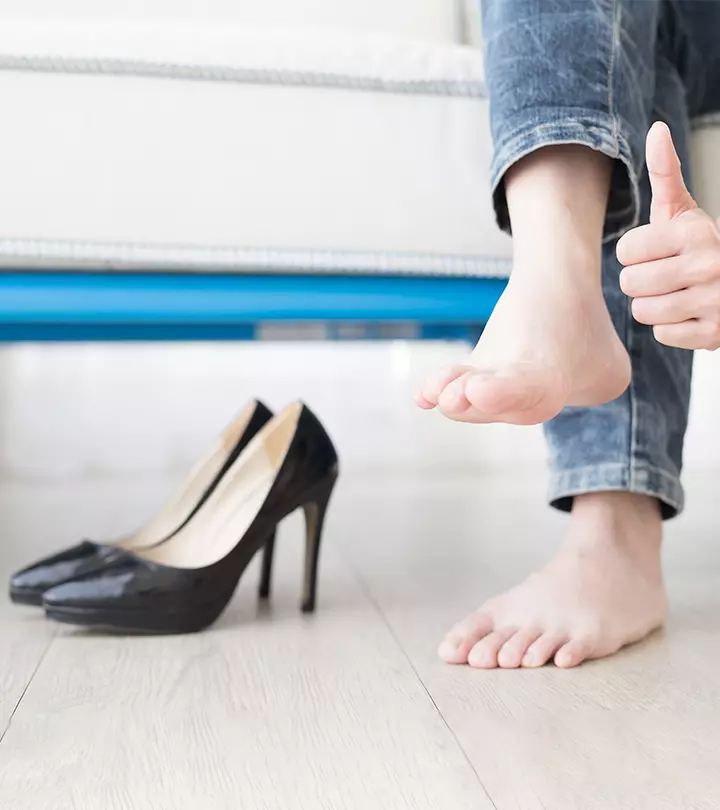
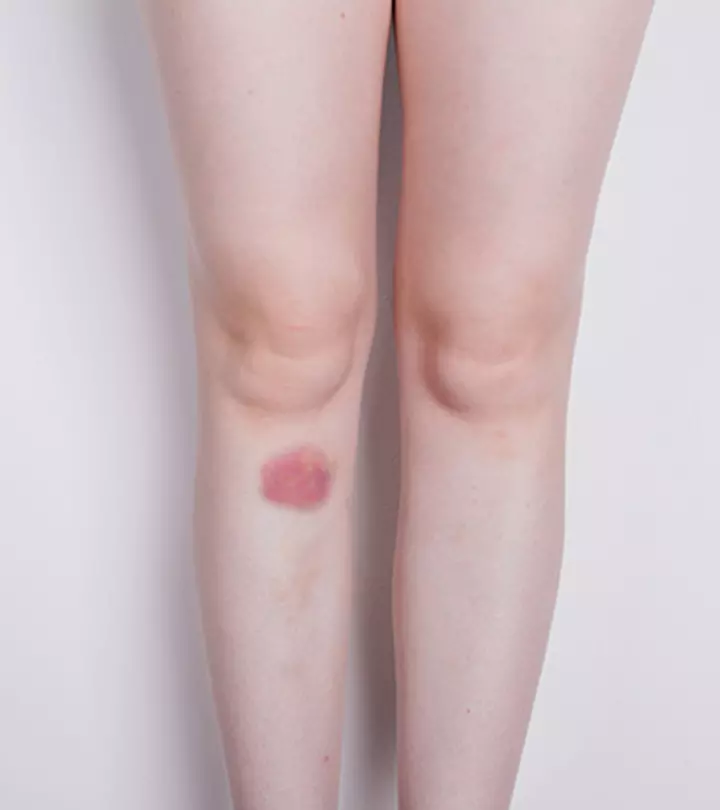


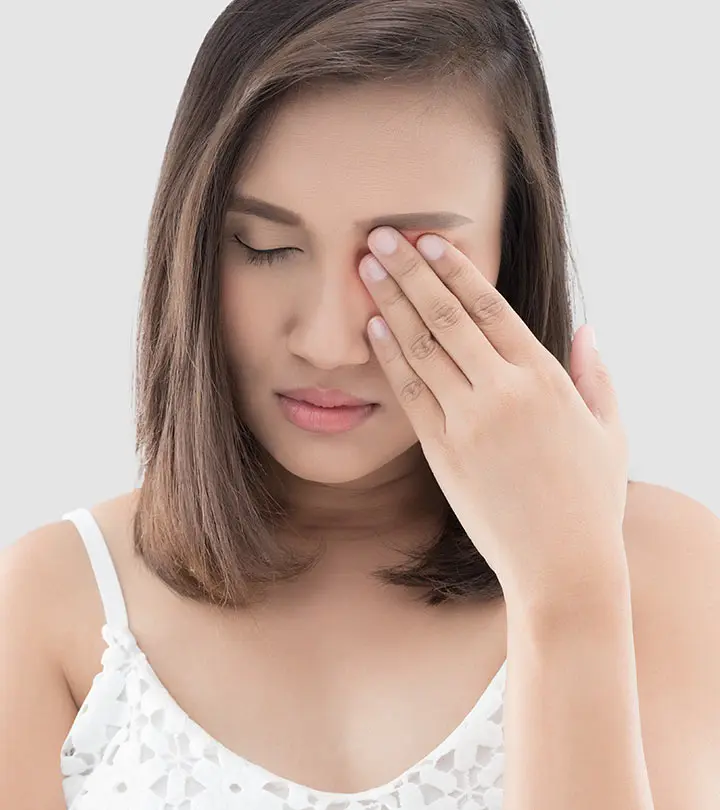








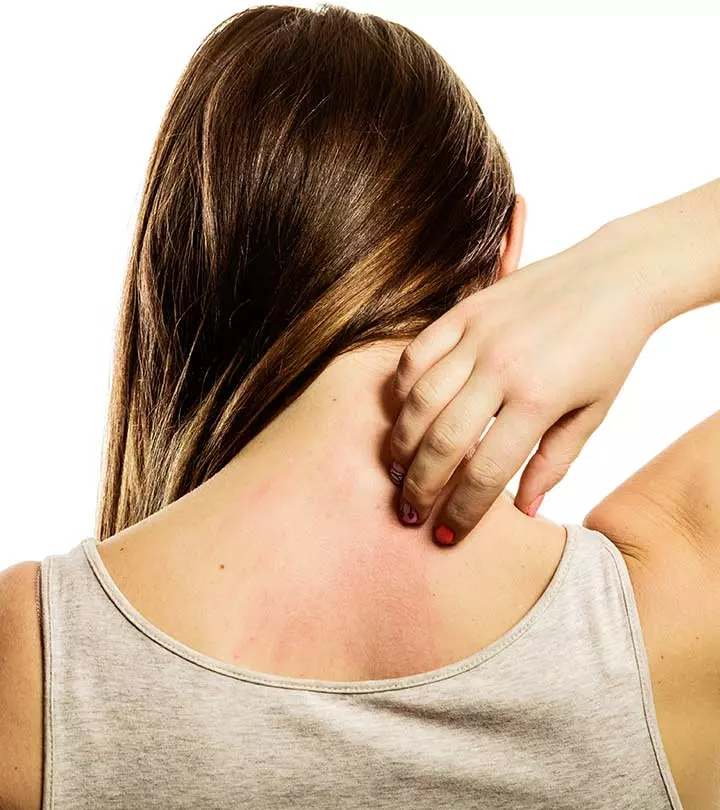





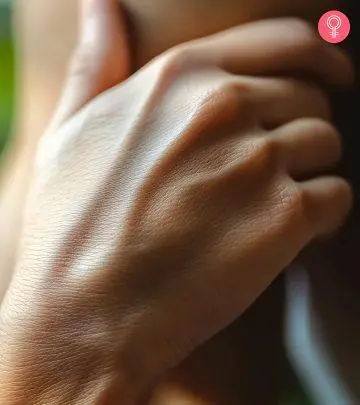
Community Experiences
Join the conversation and become a part of our empowering community! Share your stories, experiences, and insights to connect with other beauty, lifestyle, and health enthusiasts.